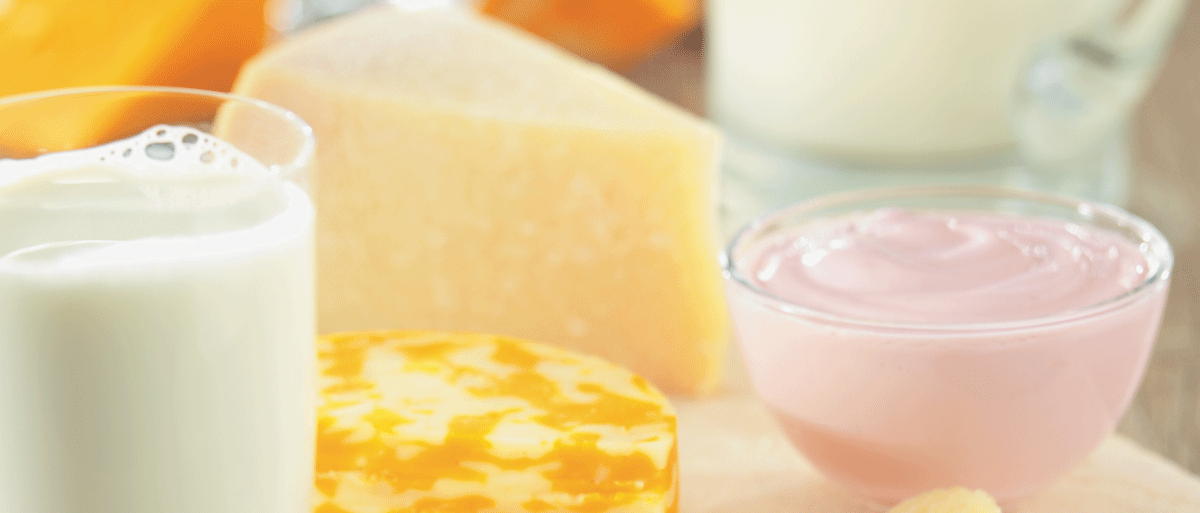You’ve seen those articles – the ones that list “The 8 Things Dietitians Never Eat” or “13 Things Dietitians Recommend for Weight Loss.”
In this fun spin, Registered Dietitian Jenna Allen dishes on the “5 things this dietitian wishes you knew about dairy.” Because, after all, as with any food-related topic, there are many myths and misconceptions about dairy foods.
- Lactose intolerance is not an allergy. Ever wonder why you can easily digest yogurt or a little bit of cheese but too much of these foods or a large glass of milk or milkshake has you sick? Lactose intolerance is a common condition, but not an allergy. People with lactose intolerance have a hard time breaking down lactose, the sugar found naturally in milk. Often, they can only tolerate small amounts of lactose at any given time. If you have lactose intolerance, with a few simple tips, you can learn to enjoy dairy foods again. Try drinking lactose-reduced or lactose-free milk, enjoying yogurt (yogurt, with live and active cultures, contains friendly bacteria that help digest lactose), or choosing aged cheeses such as Cheddar or Swiss that are naturally low in lactose. The key is to find the amount and solution that works best for you.
- Dairy Foods do not Cause Osteoporosis. Dairy foods provide a unique mix of nutrients including calcium, magnesium, phosphorus, potassium, protein and vitamin D that work together to help protect bones, by maximizing bone density and slowing age-related bone loss. The positive link between calcium in dairy products and bone health has been established for decades through dozens of clinical studies. In fact, a research review of 138 studies exploring the relationship between bone health and calcium intake, including numerous studies that used dairy products as the calcium source, found overwhelming evidence that lifelong calcium intake is one of the most significant factors for reducing risk of an osteoporotic fracture.
- Chocolate milk is a healthy beverage choice. Chocolate milk tastes great and is an excellent source of 9 essential nutrients – many of which play a key role in bone health. Ninety percent of skeletal development is completed during childhood and adolescence. Yet more than 77% of children ages 9-19 do not meet their recommended daily intake of dairy foods. Chocolate milk is a delicious way to improve nutrient intakes. As a mom and registered dietitian, I want you to understand that ideals and reality don’t often align. While it’s ideal that my kiddos drink only white milk, avoiding as much added sugar as possible, an ice cold glass of chocolate milk on a hot summer day just tastes good. I often equate chocolate milk to carrots and ranch – a little bit of ranch to get my kiddos to eat their carrots is a win-win in my book, just as a glass of chocolate milk to help kids meet their 3-daily servings of dairy is realistic. Not to mention, that for all those athletes out there, chocolate milk has the perfect balance of carbohydrate, protein, water and electrolytes that can fuel an active body and aid in recovery after exercise.
- Dairy is the #1 food source of calcium. Dairy foods are affordable and delicious, and their calcium is easily absorbed by the body. The National Academy of Sciences recommends Americans ages 1 and older consume 700-1,300 mg of calcium per day, depending on age, gender and stage of life. Eating three daily servings of milk, cheese or yogurt can help you meet these recommendations. Teens and those over age 50 have higher calcium needs, thus eating four servings of dairy foods can help them meet these recommendations. To find out how much calcium you need, visit http://ods.od.nih.gov/factsheets/Calcium-QuickFacts/. Some foods naturally rich in calcium such as spinach, kale, Swiss chard, collard greens, and soybeans are nutritionally dense and provide many important vitamins and minerals. But, they also contain compounds such as oxalic and phytic acids, which bind to calcium in the body and prevent its absorption. In fact, the body absorbs about 5% of the calcium in spinach compared to 32% from milk. This means that 3 daily servings of dairy foods in addition to a well-balanced diet with choices from all 5 food groups is key to meeting the body’s nutrient needs. On the topic of calcium, supplements cannot make up for poor food choices. While they may supply some vitamins and minerals, supplements do not contain all the nutrients found in food. For example, you can take a calcium supplement, but milk is more than just calcium – it contains protein, potassium, phosphorous and many other vitamins and minerals. Besides, food just tastes better, and it is easier to remember to eat than to pop a pill.
- Pasteurized milk is a better choice than raw milk. Pasteurized milk is the healthiest choice because it is the safest choice. Pasteurization is a simple, effective method that kills harmful pathogens found in raw milk without substantially affecting the taste or nutritional value of milk. Formal pasteurization involves heating raw milk to a certain temperature for a specific period of time. This process extends milk’s shelf-life and destroys many life-threatening harmful bacteria, including Salmonella, Campylobacter and Listeria. Since its introduction more than 100 years ago, pasteurization has been recognized around the world as an essential tool for ensuring that milk and dairy products are safe.




